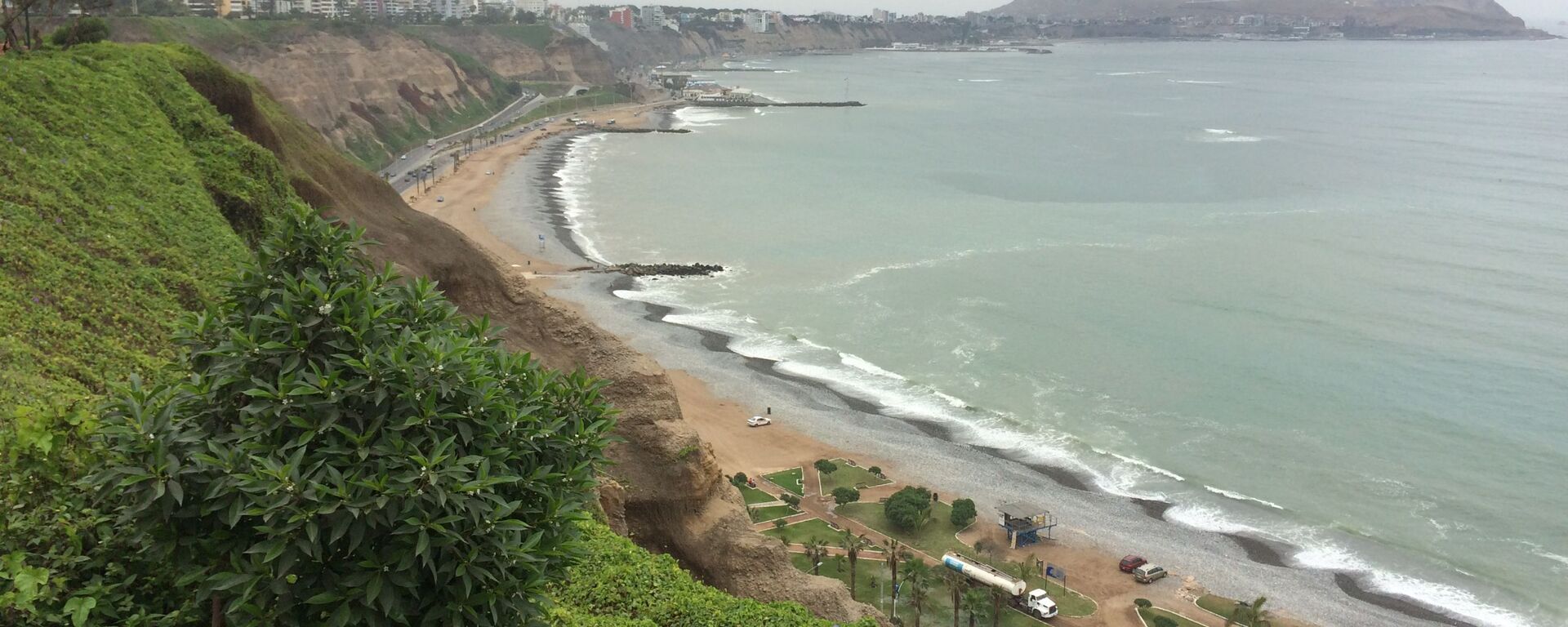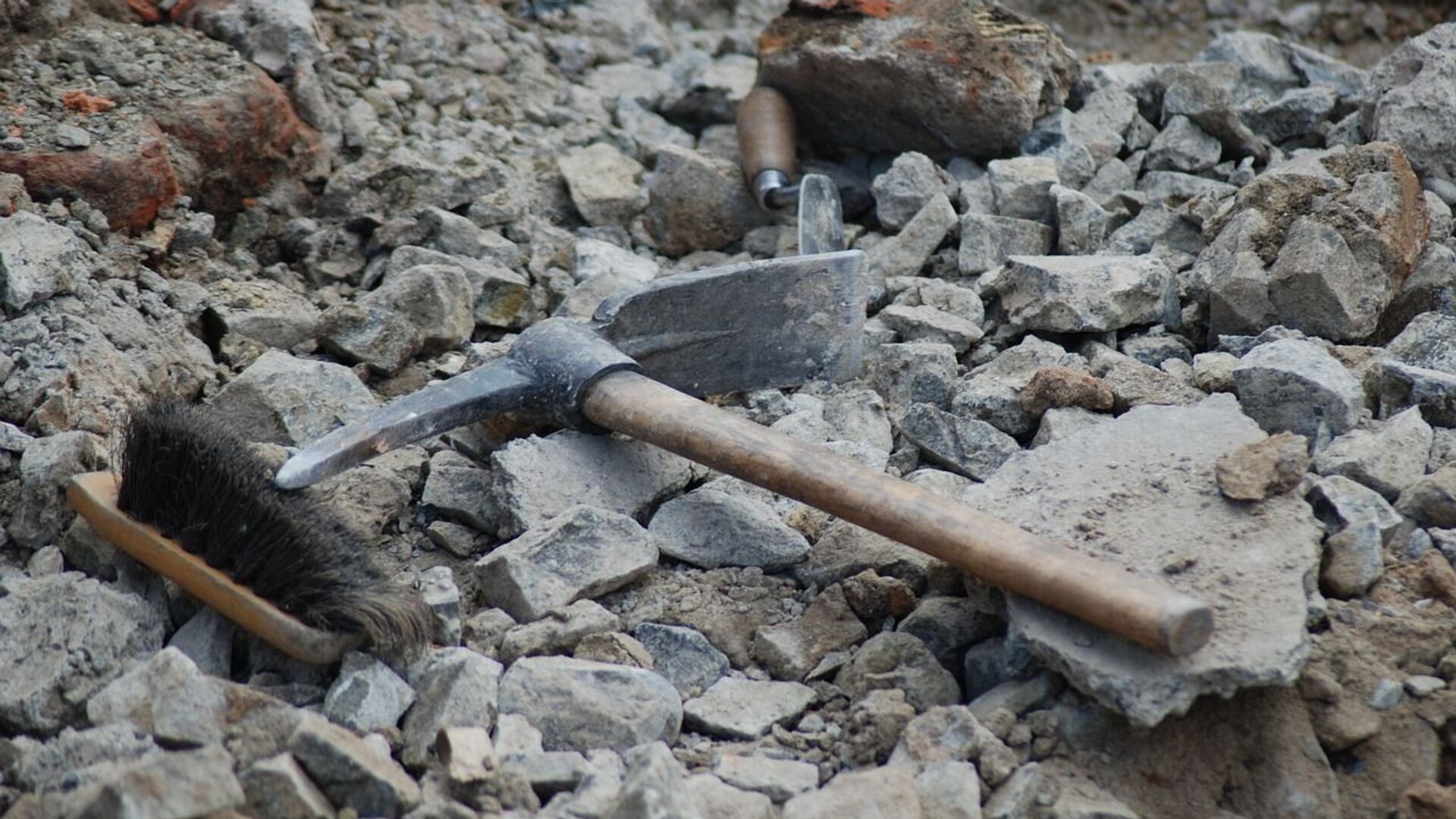https://sputnikglobe.com/20240116/brazilian-archaeologists-find-treasure-trove-including-43-human-skeletons-1116185927.html
Brazilian Archaeologists Find Treasure Trove Including 43 Human Skeletons
Brazilian Archaeologists Find Treasure Trove Including 43 Human Skeletons
Sputnik International
According to IPHAN, about 43 human skeletons and over 100,000 artifacts were discovered during excavations at the Chácara Rosane Archaeological Site in the Vicente neighborhood of Fialho in São Luis.
2024-01-16T01:45+0000
2024-01-16T01:45+0000
2024-01-16T01:45+0000
beyond politics
archaeology
history
brazil
skeleton
human skeletons
ancient civilization
https://cdn1.img.sputnikglobe.com/img/07e4/07/10/1079904806_0:110:1281:830_1920x0_80_0_0_0ca9a68ea14540d5b4fc17a3cb682cbb.jpg
Last week, Brazil’s Institute for National Historic and Artistic Heritage (IPHAN) announced a “grandiose” discovery: during construction for a new apartment complex in the coastal city of Sao Luis, workers discovered human bones and shards of pottery, which appeared to have been buried for years as their edges had been smoothed with time.Some of these discovered artifacts were left by ancient civilizations that existed up to 9,000 years ago. And in the 1970s, research at this site had been carried out by a researcher named Olavo Lima, but it wasn’t until now that researchers realized how expansive the site really is.Wellington Lage, a leading archaeologist, said the Brazilian construction giant MRV hired his company W Lage Arqueologia in 2019 to carry out an impact study at the site. During his research, Lage learned that other relics had been discovered at the site since excavations first began: including part of a human jawbone that had been found there in 1991.Lage and his team—which includes 27 people—have added to the growing scientific collection, after having discovered a plethora of stone tools, ceramic pieces, and decorated shells and bones, they also discovered 43 human skeletons and over 100,000 artifacts.Lage and his team also found four eras of human occupation at the site, including: the top layer, which was linked to the Tupinamba people, who inhabited the region when European settlers colonized the area of modern Sao Luis in 1612. The Tupinamba groups lived in large, patrilineal villages, and based their diet on ocean fishing and as well as corn. They were known to be violent, and placed their religious and social values on warfare—as well as, allegedly, cannibalism.The second layer showed artifacts that are commonly attributed to Amazon rainforest civilizations, followed by a shell mound (a sambaqui) made up of pottery, shells and bones used by some Indigenous groups to either build their homes, or as a part of a burial service.The third layer, which is about 6.5 feet below the surface, was linked to a group that made rudimentary ceramics and lived between 8,000 to 9,000 years ago, based on the depth of the find, says one report. This third settlement is significantly older than any other pre-Sambaqui settlement found thus far in the region: until now, the oldest dates back to 6,600 years ago.According to IPHAN’s announcement, “excavations and quantification of the pieces are still taking place”. But once that work is done, they will be housed by the Guardian Institution of the Federal University of Maranhao (UFMA) which is building a lab and museum to house the overflow of artifacts—a project which is being funded by MRV.
https://sputnikglobe.com/20231123/ancient-secrets-revealed-as-peru-unearths-1000-year-old-mummies-of-children-in-lima-1115154947.html
brazil
Sputnik International
feedback@sputniknews.com
+74956456601
MIA „Rossiya Segodnya“
2024
News
en_EN
Sputnik International
feedback@sputniknews.com
+74956456601
MIA „Rossiya Segodnya“
Sputnik International
feedback@sputniknews.com
+74956456601
MIA „Rossiya Segodnya“
archaeology, history, south america, brazil, bones discovered, discovery, natural history, human skeleton, skeleton, ancient civilization, rainforest civilization
archaeology, history, south america, brazil, bones discovered, discovery, natural history, human skeleton, skeleton, ancient civilization, rainforest civilization
Brazilian Archaeologists Find Treasure Trove Including 43 Human Skeletons
According to IPHAN, about 43 human skeletons and over 100,000 artifacts were discovered during excavations at the Chácara Rosane Archaeological Site in the Vicente neighborhood of Fialho in São Luis.
Last week, Brazil’s Institute for National Historic and Artistic Heritage (IPHAN)
announced a “grandiose” discovery: during construction for a new apartment complex in the coastal city of Sao Luis, workers discovered human bones and shards of pottery, which appeared to have been buried for years as their edges had been smoothed with time.
Some of these discovered artifacts were left by ancient civilizations that existed up to 9,000 years ago.
And in the 1970s, research at this site had been carried out by a researcher named Olavo Lima, but it wasn’t until now that researchers realized how expansive the site really is.
Wellington Lage, a leading archaeologist, said the Brazilian construction giant MRV hired his company W Lage Arqueologia in 2019 to carry out an impact study at the site. During his research, Lage learned that other relics had been discovered at the site since excavations first began: including part of a human jawbone that had been found there in 1991. Lage and his team—which includes 27 people—have added to the growing scientific collection, after having discovered a plethora of stone tools, ceramic pieces, and decorated shells and bones, they also discovered 43 human skeletons and over 100,000 artifacts.
"We've been working four years now, and we've barely scratched the surface," said Lage.

23 November 2023, 03:47 GMT
Lage and his team also found four eras of human occupation at the site, including: the top layer, which was linked to the
Tupinamba people, who inhabited the region when European settlers colonized the area of modern Sao Luis in 1612. The Tupinamba groups lived in large, patrilineal villages, and based their diet on ocean fishing and as well as corn. They were known to be violent, and placed their religious and social values on warfare—as well as, allegedly, cannibalism.
The second layer showed artifacts that are commonly attributed to Amazon rainforest civilizations, followed by a shell mound (a sambaqui) made up of pottery, shells and bones used by some Indigenous groups to either build their homes, or as a part of a burial service.
The third layer, which is about 6.5 feet below the surface, was linked to a group that made rudimentary ceramics and lived between 8,000 to 9,000 years ago, based on the depth of the find, says one
report. This third settlement is significantly older than any other pre-Sambaqui settlement found thus far in the region: until now, the oldest dates back to 6,600 years ago.
"This could completely change the history of not just the region but all of Brazil," said Lage, who believes that person migrated from Asia to the Americans—settling in this region of what is now Brazil—at least 1,400 years earlier than previously thought.
According to IPHAN’s announcement, “excavations and quantification of the pieces are still taking place”. But once that work is done, they will be housed by the Guardian Institution of the Federal University of Maranhao (UFMA) which is building a lab and museum to house the overflow of artifacts—a project which is being funded by MRV.



